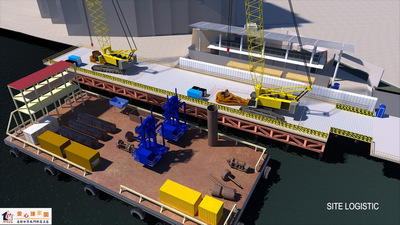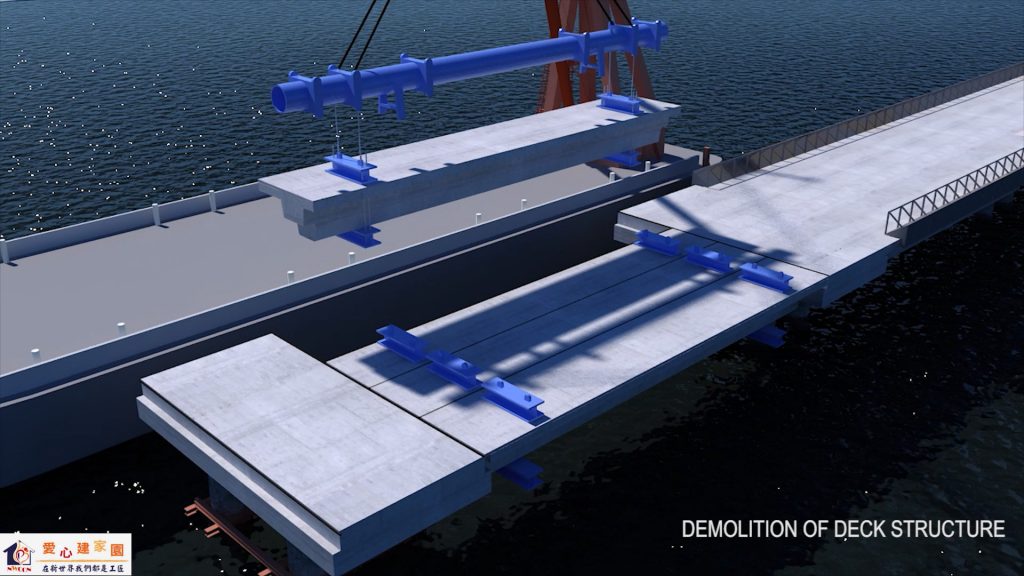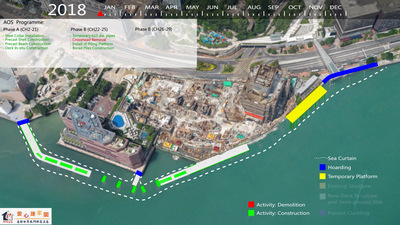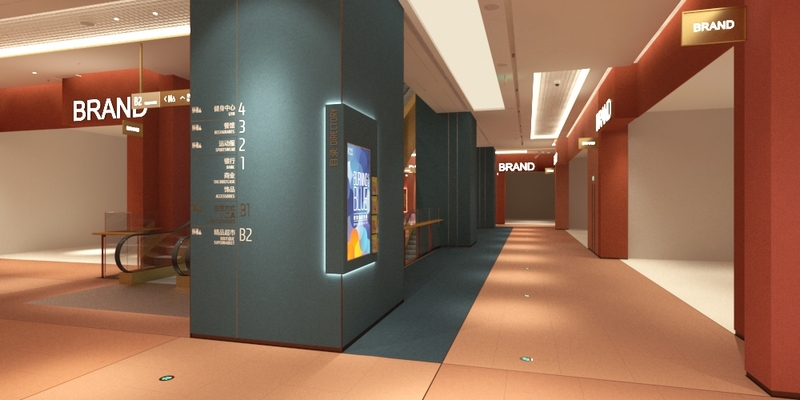
Founded in 2018, Hong Kong technology company ConTech pOint (CTO) is a specialist in bespoke digital solutions for clients in the design and construction industries, helping professional practices in their migration towards digital delivery. The company works to promote the use of Building Information Management (BIM) and other technologies, such as Common Data Environment (CDE) , Digital Works Supervision System (DWSS), Smart Site Safety System (SSSS) and project management cloud SaaS.
(按此瀏覽中文版)
Today, the CTO’s footprint covers commercial and residential developments, institutional projects including sports facilities, theatres, education and medical facilities, and civil infrastructure projects, such as roadworks, tunnels and bridges.
As Welie Ng, General Manager, explains, with a headcount now standing at around 50 people the company’s skillsets include BIM and building engineers with CIC chartered project management qualifications; an IT development team with web and app developers supported by project managers and specialists in product and service customisation; IT support and customer success; dfMA digital designers and MEP design coordinators.
“We recruit staff with these four core skillsets and with the relevant experience for construction projects during the inception, design, construction and handover stages of work. It is a basic requirement that our staff are not mere digital technicians but are seasoned leaders, coordinators and engineers who understand the process of local practices.”
Ng, acknowledges that today and in the coming decade, Hong Kong is facing a critical shortage of skilled engineering professionals, including BIMers. Indeed, CIC Hong Kong estimates a shortfall of between 1000-2000 BIM managers and coordinators in the next ten years.
“Basic training is commonly available from local education and vocational institutes. However, competent BIMers need to be supported in real practice after basic training. IT and support professionals, as well as design professionals within the construction industry are also in scarce supply currently in Hong Kong, and dedicated professionals must be trained in-house,” he observes.
While there are other technology companies in the market, CTO prides itself on being a first-choice partner due to its extensive experience of local private and public works currently in the tender, design, construction and fabrication phase of projects. Further Ng points out that around 25% of CTO employees are chartered CIC professionals. CTO also provides realtime BIM without software to support remote, collaborative and coordination works, as well as producing grade AA simulation in-days for clients through engaging video and visual materials.
“Our realtime BIM, hoisted in CTO’s proprietary CDE SaaS platform, can facilitate BIM quantity take off (QTO) to help surveyors improve productivity from BIM practices. QTO is a fully automatic material calculation engine and application platform based on building information modelling. It uses digital technology to shorten the calculation and update time of major engineering material consumption. The SaaS cloud system, known as Construction Information Anywhere (CIA), acquired ISO 27001 and 27017 certificates for its IT and Cloud security. This is one of the very few platforms in Hong Kong that can handle document, drawing change management workflow and site safety. CIA is specifically designed for local design and construction practices and includes features that enable us to tackle construction pain points, such as working on no-network-coverage areas, as well as supporting teamwork in small groups, and front-line works with back office engineers. Documents are fully searchable, and the online document and drawing registries allowing engineers and surveyors to crunch data within the system using common spreadsheet formats such as Excel,” he explains. “Our CIA System is on the Pre-approved List of the Construction Industry Innovation and Technology Fund (CITF) with the Pre-approved Code PA20-127.” Ng added.
Scope of service
CTO as an independent BIM advisory, consultancy and auditor with ISO 19650 BIM professional recognition, work includes designing digital workflows, covering but not limited to BIM project management, modelling, design, coordination, simulation, quantity take off (QTO), augmented reality capturing through 360 degree photos and 3D scanning, as well as auditing the quality and progress of a BIM-enabled project.
CTO works with all sectors within the Architecture, Engineering and Construction (AEC) industries, including owners and project managers, architects and consultants, main contractors, package contractors and facility managers. The company briefs clients through workshops with their staff, augmented with BIM technologies and has also delivered basic BIM software training for a large local contractor to over 1000 staff of mangers, engineers and surveyors.
“Our customised CIA solution is targeted primarily at developers and main contractors, while this propriety CDE platforms are designed to elevate the performance of all players within the AEC industry. As such, we are able to position ourselves as a key member of the client’s consultant team or technical partner, through formulating BIM strategies and contractual arrangements, technical specifications and execution plans for specific projects. For example, for architects this might mean helping to visualise and evaluate their designs through BIM, or for main contractors enriching their competitive profile to meet BIM expectations and to deliver BIM-enabled constructions, plans and to audit control measures,” he explains.
The output is impressive: CTO’s propriety CDE has been commissioned for more than 80 projects, served more than 5000 users and 400 companies, with 11 types of workflows digitally deployed for document approval and more than 1.2 million documents handled digitally via the Cloud.
Examples of CTO’s BIM projects include a commercial project at Chap Lap Kok, where CTO used BIM to produce all CSD and CBWD drawings, eliminating manual drafting work and eliminating all drawing inconsistency issues; a residential development in Wong Chuk Hang where the company helped orchestrate all designers to deliver and collaborate within a BIM environment to allow the project owner to evaluate the design flat mix to maximize return value and to eliminate major multidisciplinary buildability issues at the tender stage of work; working with the architect at a hospital project to automate over 500 layout drawings with design iterations in just four months; use of reality capture technology augmented with BIM at a conservation project in North Point to retrofit the architectural, structural and E&M fabric of an irregular-shaped building to millimetre grade accuracy.
Benefits of BIM
CTO as a technical solution, BIM is designed to enhance productivity, transparency and scalability, by digitally automating manual and repetitive processes, identifying and tracing times, people and tasks, and making digital processes and data through cloud-based solutions made accessible anytime and anywhere. The effect, according to Ng is, better quality projects delivered by collaborative teams with less risk.“BIM allows owners
to take back control of production information and hence make more intelligent and confident decisions leading to better visual and performance outcomes, better cost control, social response, and end-user benefits,” he says.
But it’s not just about adding value through reducing construction costs and increasing ROI. Technology is also about modernisation of an industry keen to absorb talents to cope with the volume of Hong Kong’s upcoming development challenges. From a management perspective, Ng advocates that project teams can take a more active role in the design, planning and construction processes, with drawings and documents such as work permit approvals, site conditional constraints, site progress, incidence and compliance issues and related figures made transparent and timely to all participants “At CTO, we believe that BIM helps us to raise the ESG quotient of corporations, enhance supply chain sustainability, and to work collaboratively and remotely to tackle any complex situation, thus enhancing business continuity,” he says. “It allows us to add value to our clients’ operations and projects by drastically increasing efficiency relating to information handling at all stages of work, whilst reducing redundancy in harnessing 3D visualisation, reducing time lost in correcting erratic design and site work, while improving responsiveness to sensitive and ad-hoc issues and creating reusable sustainable data for ongoing and coming projects,” he adds.
The future is now
He also has a comment for the industry that if BIM is not adopted as widely this could lead to Hong Kong suffering from a lack of competitiveness, and with larger and more complex construction projects leading to the city being left behind by the increasingly digitised and modern production supply chain of mainland China.
“There are wide misconceptions that projects can still be realised without modern BIM or digital tools, or that it’s solely the client’s or the designer’s responsibility to come up with feasible and effective building design. Other misconceptions are that nothing can be done to help Hong Kong’s ageing workforce or that they’re too old to take on the additional burden of replacing traditional tools with digital ones. This is simply not true – BIM is something to be added to the skillset rather than hinder it and Hong Kong cannot afford to fall behind, and CTO exists as a partner to help bridge this gap,” he concludes.





























